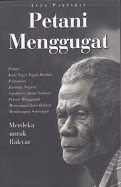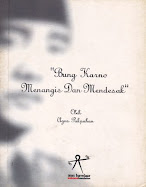The Jakarta Post , Jakarta | Fri, 06/15/2007 9:25 AM | Opinion
Agus Pakpahan, Jakarta
Agriculture is a strategic instrument for generating income and employment opportunities and reducing poverty. Consequently, the growth of agriculture is one of the most important determinants in increasing the rate of economic growth.
The most important agricultural commodity for Indonesia is rice. Yet, Indonesia's rice production rate over the past five years has remained stagnant.
The Central Bureau of Statistics actually forecasted a 2.3 percent decline or 1.26 million tons of paddy -- which is approximately 670,000 tons rice (milled paddy). This is a significant loss that must be offset by imported rice to maintain the stability of pricing.
Studies show that productivity and production are determined by rice farmers, who need to establish the best possible farming practices in order to gain the highest output. In order for farmers to be able to apply the best farming practices, they need supporting infrastructure.
The current condition of irrigation mechanisms and rural roads, as well as availability of raw materials such as seeds and fertilizer, are not conducive in allowing farmers to conduct the best rice-farming practices possible.
Most farmers do not have sufficient funds to buy raw materials because they are very poor, with an average land ownership of 0.5 hectares.
A market mechanism is applied for the distribution of raw materials, such as seeds and fertilizers, to farmers who simply do not have the funds to buy them.
Lack of capital is the main reason farmers can not make an adequate investment in their rice fields. This explains why only 30 percent of farmers use good quality (certified) seeds.
Although fertilizer is subsidized for rice farmers, it has had no significant impact on the production of rice.
We need to improve the way raw materials are distributed to farmers. Farmers' capital -- their land and labor -- should be supported by conducive policies and additional farming infrastructure.
State companies that produce or supply fertilizer, seeds and irrigation water should increase their support to farmers. With good planning and the right combination of seeds and fertilizer, timely delivery and field productivity can be improved.
Some experiments indicate that rice productivity can be increased by more than eight tons per hectare. This is about two to three tons per hectare higher than the national average rice productivity rate. This additional production is equivalent to Rp 4-6 million per hectare.
It is a worthwhile investment indeed. If we assume the price of urea (fertilizer) is Rp 1,200 per kilogram and the price of paddy is Rp 2,000 per kilogram -- according to prices set by the government -- then one kilogram of urea is equivalent to 0.6 kilograms of paddy.
If, for example, state fertilizer producer PT Pusri provides five million tons of urea in rice fields as an investment, the output will amount to three million tons of paddy or equivalent to 1.59 million tons of rice worth Rp 6.36 trillion. This is Rp 360 billion (60 percent) higher than PT Pusri's Rp 6 trillion sales revenue if it sells the same volume of fertilizer to farmers at Rp 1,200 per kilogram.
By this, all constraints associated with lack of capacity on the part of farmers are removed and PT Pusri would still gain profit.
The above calculation does not include seeds and other raw materials. The problem now is how this idea can be effectively promoted among policy makers and state companies to support the national program and ensure food security in the country.
The writer is an agricultural economist who specializes in natural resources and institutional economics.











Tidak ada komentar:
Posting Komentar